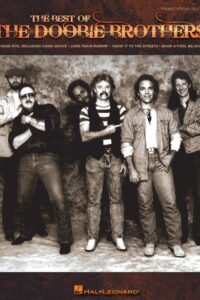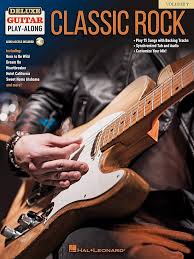Come join us now, and enjoy playing your beloved music and browse through great scores of every level and styles!
Can’t find the songbook you’re looking for? Please, email us at: sheetmusiclibrarypdf@gmail.com We’d like to help you!
Table of Contents
Listen to The Doobie Brothers (past, present, and future)

Listen to the Music” – The Doobie Brothers (LIVE on The Late Show)
Best Sheet Music download from our Library.

Please, subscribe to our Library.
If you are already a subscriber, please, check our NEW SCORES’ page every month for new sheet music. THANK YOU!
The Doobie Brothers: A Fifty-Year Ride on the Rock ‘n’ Roll Train
The story of The Doobie Brothers is a quintessential American rock saga. It’s a tale of two distinct, massively successful eras, a journey through folk, hard rock, soul, and jazz-infused pop, all held together by a relentless groove and impeccable harmonies. From their biker-bar origins to their status as Rock and Roll Hall of Famers, the Doobies have navigated personnel changes, shifting musical trends, and a hiatus, emerging as one of the most enduring and beloved bands in history.

Part 1: The Early Days – Listen to the Music (1970-1974)
The Doobie Brothers were formed in San Jose, California, in 1970. The name, suggested by a friend, was 1970s slang for a marijuana joint, reflecting the band’s laid-back, counter-culture origins. The original lineup consisted of:
- Tom Johnston (vocals, guitar)
- Patrick Simmons (vocals, guitar)
- John Hartman (drums)
- Dave Shogren (bass, vocals)
Their self-titled debut album (1971) was a blend of folk, country, and blues-rock, but it failed to make a significant commercial impact. It was their second album, “Toulouse Street” (1972), that launched them into the stratosphere. With the addition of bassist Tiran Porter and second drummer Michael Hossack, the band solidified their signature “double-drummer” sound, creating a powerful, rhythmic foundation. The album spawned two timeless hits written by Tom Johnston: “Listen to the Music” and “Jesus Is Just Alright.” These tracks defined the early Doobie sound: driving acoustic rhythms, soaring harmonies, and infectious, optimistic energy.
The momentum continued with “The Captain and Me” (1973), arguably the pinnacle of this first era. It contained the hard-rocking classics “Long Train Runnin’” (which famously emerged from a jam session) and “China Grove,” alongside the intricate and beautiful “South City Midnight Lady.” This period established the Doobies as hitmakers and powerhouse live performers, their twin-guitar, twin-drummer attack thrilling audiences across the country.
Part 2: A Soulful Transition – The Michael McDonald Era (1975-1982)
By 1974, the relentless touring and lifestyle began to take a toll, particularly on Tom Johnston, whose health deteriorated. He was forced to step back from touring. Needing a replacement, the band made a decision that would completely redefine their sound. They brought in Michael McDonald, a keyboardist and singer who had worked with Steely Dan.
McDonald’s soulful, blue-eyed soul baritone and his jazz-influenced songwriting were a radical departure from Johnston’s rock and blues roots. Initially a temporary touring member, McDonald’s influence became permanent on the album “Takin’ It to the Streets” (1976). The title track and “It Keeps You Runnin’” showcased this new direction: sophisticated, smooth, and steeped in R&B.
This new incarnation catapulted the band to even greater commercial heights. The album “Minute by Minute” (1978) was a cultural phenomenon. The lead single, “What a Fool Believes,” written by McDonald and Kenny Loggins, became a #1 hit, won Grammy Awards for Record of the Year and Song of the Year, and defined the sound of soft-rock for a generation. The album itself spent five weeks at #1 and won the Grammy for Best Pop Vocal Performance by a Duo or Group.
Despite this massive success, the band’s internal dynamics were shifting. Tom Johnston, now healthy, found himself creatively at odds with the new direction. He contributed less and eventually left after the “One Step Closer” album (1980). With musical differences and declining sales, The Doobie Brothers officially disbanded after a farewell tour in 1982.
Part 3: The Hiatus and the Triumphant Reunion (1983-Present)
The breakup was not the end. In 1987, a charity benefit concert organized by Simmons and Johnston to raise money for ailing drummer Keith Knudsen sparked a full-fledged reunion. Crucially, this reunion aimed to bridge both eras of the band. The “reunion” lineup included core members from both phases: Tom Johnston, Patrick Simmons, Michael McDonald, John Hartman, Michael Hossack, and Tiran Porter.
The tour was a massive success, proving the enduring appeal of the Doobies’ vast and varied catalog. It led to the album “Cycles” (1989), which produced a top-10 hit, “The Doctor,” a classic Tom Johnston rocker. This re-establishment of the band as a viable touring and recording entity has continued unabated for over three decades.
They have weathered the passing of several key members, including drummers Keith Knudsen, Michael Hossack, and, in 2023, the pioneering co-founder John Hartman. Through it all, Johnston and Simmons have remained the unwavering constants, the heart and soul of the band, leading a lineup that has included longtime members like John McFee (guitar, violin, vocals since 1979) and Ed Toth (drums).
Part 4: The Doobie Brothers in the Present Day
Today, The Doobie Brothers are more active than ever. They maintain a relentless touring schedule, performing to sold-out crowds across the globe. Their setlists are a masterclass in hit-making, seamlessly weaving together the rock anthems of the Johnston era (“Long Train Runnin’”, “China Grove”) with the smooth soul of the McDonald era (“What a Fool Believes,” “Takin’ It to the Streets”).
A landmark event was their long-overdue induction into the Rock & Roll Hall of Fame in 2020. This honor cemented their legacy and recognized their significant impact on popular music.
In 2021, they released “Liberté,” their first new album in six years. Produced by John Shanks, the album was a return to their guitar-driven roots, with Tom Johnston taking a primary role in the songwriting.
Perhaps the most significant recent event has been the return of Michael McDonald to the fold. In 2023, the band announced The 2024 Tour, featuring McDonald, Johnston, and Simmons together for the first time in over two decades. This is a monumental event for fans, offering a chance to hear the band’s complete history performed by the voices that defined it.
Part 5: The Future – The Highway Goes On Forever
The future of The Doobie Brothers looks bright and is focused on several key areas:
- The 2024 Tour and Beyond: The current tour with McDonald is a major event. Its success will likely dictate whether this collaboration continues into future touring cycles. The demand to see the “definitive” lineup is immense.
- New Music: While they are primarily a legacy act on the road, the release of “Liberté” proves the creative spark remains. It’s possible that the renewed collaboration with McDonald could extend into the studio, though no official plans have been announced.
- Legacy and Influence: The Doobies’ music continues to find new audiences through film, television, and streaming services. Their songs are timeless, representing an era while transcending it. The band’s focus will continue to be on preserving and performing their legendary catalog for generations to come.
Musical Style and Legacy
The Doobie Brothers’ legacy is unique. They are one of the few bands to have successfully embodied two completely different musical identities, both of which produced iconic, era-defining hits.
- The Early Sound: A blend of blues-rock, folk, and country, characterized by the “double-drummer” percussion, interweaving guitars, and the raspy, earnest vocals of Tom Johnston.
- The McDonald Sound: A sophisticated fusion of pop, R&B, and jazz, defined by McDonald’s distinctive soulful voice, complex chord changes, and lyrical piano and keyboard work.
Their influence can be heard in the harmony-rich soft rock of the 70s and 80s, and their songs have been covered and sampled by artists across genres. They are, at their core, master craftsmen of the American rock song.
Conclusion
From “Listen to the Music” to “What a Fool Believes,” The Doobie Brothers have provided the soundtrack to millions of lives for over half a century. They are a testament to the power of evolution, resilience, and, above all, great songwriting. Through lineup changes and stylistic shifts, they have remained true to a core principle: creating music that connects. As they continue to tour, with their classic songs and legendary voices reunited, one thing is clear: the train, as the song says, is still runnin’.

The Doobie Brothers – Walk This Road (feat. Mavis Staples)
Browse in the Library:
Or browse in the categories menus & download the Library Catalog PDF:
Please, visit our Social Channels.
“Long Train Runnin’” – The Doobie Brothers (LIVE on The Late Show)
GRAMMY-winning rock legends The Doobie Brothers treat the Late Show audience to an impromptu performance of “Long Train Runnin’” from their 1973 album, ‘The Captain and Me.’ Listen to their new album, ‘Walk This Road,’ and find tickets to the WALK THIS ROAD North American summer tour on their website: https://thedoobiebrothers.com.
